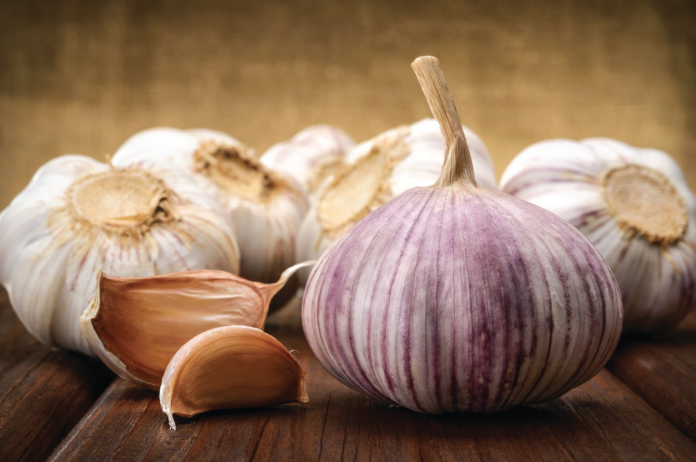
Being the Garlic Capital of the World means there are plenty of garlic goodies to be found in Gilroy, but growing your own garlic may be the most rewarding way to celebrate this cousin to onions, shallots, chives and leeks.
In late spring, garlic plants may not look like much. Their green tops are browning and falling over. By summer, they will be ready to harvest, sharing their underground treasure with cooks of all ages. Whether you use your garlic to braid as gifts, in a hearty Italian tomato sauce, or to make your own Gilroy favorite, garlic ice cream, late summer is the perfect time to start growing your own garlic.
Garlic can be grown in containers, shade gardens, on balconies or windowsills, or in traditional garden rows. As a bulb, it is a resilient plant that can fit into practically any landscape. Before planting your garlic, however, you will want to prepare the soil. You can do this by chopping up disease-free yard and kitchen waste and lay this material on top of the soil or dig it in a few inches.
By the time October rolls around, the worms will have created the perfect growing medium for your garlic. While you can grow new garlic from bulbs purchased at the grocery store, you are better off buying starts from a reputable grower. Grocery store garlic is perfectly safe to eat, but it may harbor diseases that can harm future crops for many years.
Garlic comes in two basic forms: hardneck and softneck. The softneck varieties store better, but the hardneck varieties produce bigger cloves that are easier to peel. When you are ready to plant, simply separate the cloves from a garlic bulb and plant them approximately 6 inches apart and 1 inch deep, with the root end down and the pointy end up. That’s it!
Garlic has been cited as a cure-all and demon repellent, among other questionable attributes, but research has shown that garlic really does repel aphids, cabbage worms, codling moths, Mexican bean beetles, peach borers, and even slugs and snails. In my book, that makes garlic worthwhile simply as a natural pest and disease inhibitor. Of course, I love to eat garlic, so I would plant it anyway!
When the leaves start to turn yellow and fall over, gently remove them from the ground, dust off the dirt, and put them in a shady spot for a couple of weeks. If you feel inspired, you can then try braiding your garlic crop, but I have found that it’s a lot harder than it looks.
Be sure to save your very best garlic for planting in the following fall. Over time, your garlic crop will be become better acclimated to your microclimate and produce even better harvests!
Kate Russell is a UCCE Master Gardener in Santa Clara County. For more information, visit mgsantaclara.ucanr.edu or call 408.282.3105 between 9:30am-12:30pm Monday through Friday.









